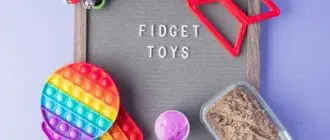One of the greatest challenges that educators face today is the issue of how to address a wide range of skills and abilities in the classroom. Since all people learn differently, teachers must be able to approach instruction from various angles to meet their students’ needs.
So, how?
There are several steps to take in order to first understand what your students already know, determine their strengths and weaknesses, and finally develop a strategic plan to assist them in meeting their academic goals through differentiated instruction and active learning.
Get to Know Your Students
How do you address a wide range of skills and abilities in your classroom?
Beginning the year, or course of study, with a simple pre-test in each subject area, or your primary content focus is a great way to obtain insight into your students’ current understanding of the subject.

A pre-test allows the students to show that they know, especially if you offer open-ended responses, as well as provides you a chance to determine their strengths and weaknesses in their ability to express their knowledge of the content.
Learning Styles
You can implement some instructional practices to discover their different learning styles to address a wide range of skills and abilities in your classroom.
Older Learners
If you teach advanced students or high-school and college classes, your pupils may already know how they learn best. There are surveys and quizzes available to help them communicate their preferences when it comes to instructional strategies.
Younger Learners
Younger students, such as primary and elementary-aged children may not be familiar with instructional approaches or be able to identify what works best for them. Check out some of the professional development offerings by Kagan to find examples of interactive learning strategies.

One more thing…
How Would You Address a Wide Range of Skills and Abilities in Your Classroom? Check out this video for creative teaching ideas to help you support your students’ individualized learning styles.
Progress Monitor
When considering how to address a wide range of skills and abilities in the classroom, ongoing progress monitoring can help student learning. Once you identify student needs, you can set up specific, measurable goals for your students.
Determine students’ strengths and weaknesses based on their pre-assessment data, then group students according to their specific needs. If you have students who need additional support on fractions or writing complete sentences, then you can work with them during small groups.
Establish classroom routines that allow you to see your small groups of learners each day. It will require classroom management practices in place, but it is one of the greatest opportunities to help students work on target skills with more direct attention.
Jump In: It is important to establish order in your classroom so that there is a smooth flow of engagement between you, the teacher, and them, the students. Read my article on the Importance of Classroom Rules for Learning: Establishing Guidelines for Class Efficiency to achieve this.
Differentiated Instruction
How would you address a wide range of skills in your classroom? Because all students learn differently, you must identify their learning styles and find ways of incorporating these techniques into your classroom instruction.
Some students are auditory learners and need to hear instructions, vocabulary, and examples auditorily, while other students are more visual or kinesthetic.
Once you recognize how each student learns best, you can address their different learning styles by using as many varieties of instruction as possible.

For instance, writing the content on the board, using visuals or images, verbally stating the content, and asking students to manipulate the words, text, or numbers on their own, incorporates differentiated instruction for visual, auditory, and kinesthetic learners.
It is also important to consider student abilities. If a student is performing at a higher level than their peers, you can challenge them by giving them harder problems, a higher level of text, or an extension activity.
If students are working at a lower level or slower pace, you can reduce the number of problems, use smaller numbers or easier sections of text to encourage success and mastery.
Frequently Asked Questions
How do you accommodate for different learning abilities in your classroom?
Utilizing small group instruction and working with students based on their individual needs as much as possible is one way how you would address a wide range of skills in your classroom.
A skill every teacher must have is the ability to consider every learning style, especially when teaching a new skill or reviewing a difficult task.
How do you meet a wide variety of needs for the students you support?
When thinking about how would you address a wide range of skills and abilities in your classroom, it is important to use a variety of instructional strategies in order to reach all learners. Teachers can find professional development opportunities that offer useful resources and tools.

Final Considerations
If you have wondered just how you would address a wide range of skills and abilities in your classroom then you are not alone! This is an ongoing challenge for every teacher.
Adults and children alike learn differently, therefore it is important for teachers and schools to work together to help students think for themselves, problem solve and gain valuable skills needed throughout their lives.
In conclusion, take the time to get to know your students and what works best for them. Continue to implement as many cooperative learning practices as possible when sharing content information so they can find success in education.
Last Updated on March 24, 2023 by Emily
- Facebook9
- Twitter21
- Pinterest67
- 97shares




